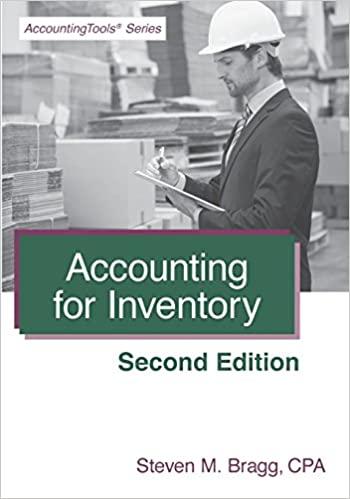Answered step by step
Verified Expert Solution
Question
1 Approved Answer
Standard Price and Volume begin{tabular}{l} hline Standards: Direct materials 23.0 yards per awning at $18.00 per yard Direct labor 4.0 hours per awning






Standard Price and Volume \begin{tabular}{l} \hline Standards: \\ Direct materials 23.0 yards per awning at $18.00 per yard \\ Direct labor 4.0 hours per awning at $17.00 per hour \\ Variable MOH standard rate $8.00 per direct labor hour \\ Predetermined fixed MOH standard rate $10.00 per direct labor hour \\ Total budgeted fixed MOH cost $74,200 \\ \hline \end{tabular} Actual Results Purchased 46,550 yards at a total cost of $814,625 Used 42,900 yards in producing 1,900 awnings Actual direct labor cost of $128,885 for a total of 7,450 hours Actual variable MOH$61,090 Actual fixed MOH $80,200 Pender Awning manufactures awnings and uses a standard cost system. The company allocates overhead based on the number of direct labor hours. The following are the company's cost and standards data: (Click the icon to view the standards.) Actual cost and operating data from the most recent month are as follows: (Click the icon to view the actual results.) All manufacturing overhead is allocated on the basis of direct labor hours. Read the requirements. Requirement 1. Calculate the standard cost of one awning. favorable (F) or unfavorable (U). Abbreviations used: DM= Direct materials.) First determine the formula for the price variance, then compute the price variance for direct materials. Determine the formula for the quantity variance, then compute the quantity variance for direct materials. Now compute the variable manufacturing overhead efficiency variance. First determine the formula for the efficiency variance, then compute the efficiency variance for variable manufacturing overhe Requirement 2d. Calculate the fixed manufacturing overhead variances. (Enter the variance as a positive number. Label the variance as favorable (F) or unfavorable (U).) Begin by computing the fixed manufacturing overhead budget variance. First determine the formula for the budget variance, then compute the budget variance for fixed manufacturing overhead. Now compute the fixed manufacturing overhead volume variance. First determine the formula for the volume variance, then compute the volume variance for fixed manufacturing overhead. Requirement 3. Explain what each of the variances you calculated means and give at least one possible explanation for each of those variances. Direct materials: \begin{tabular}{llll} Variance & Meaning & Possible explanation \\ \hline DM price & & \\ DM quantity & & \\ & & \end{tabular} Direct Labor: \begin{tabular}{lll|} Variance & Meaning & Possible explanation \\ \hline DL rate & & \\ DL efficiency & & \end{tabular} Variable manufacturing overhead: \begin{tabular}{llll|} Variance & Meaning & Possible explanation \\ \hline VOH rate & & \\ VOH efficiency & & & \end{tabular} VOH efficiency Fixed manufacturing overhead: \begin{tabular}{llll|} Variance & Meaning & \multicolumn{1}{c}{ Possible explanation } \\ \hline FOH budget & & \\ volume & & \\ \hline \end{tabular} Are any of the variances likely to be interrelated
Step by Step Solution
There are 3 Steps involved in it
Step: 1

Get Instant Access to Expert-Tailored Solutions
See step-by-step solutions with expert insights and AI powered tools for academic success
Step: 2

Step: 3

Ace Your Homework with AI
Get the answers you need in no time with our AI-driven, step-by-step assistance
Get Started


